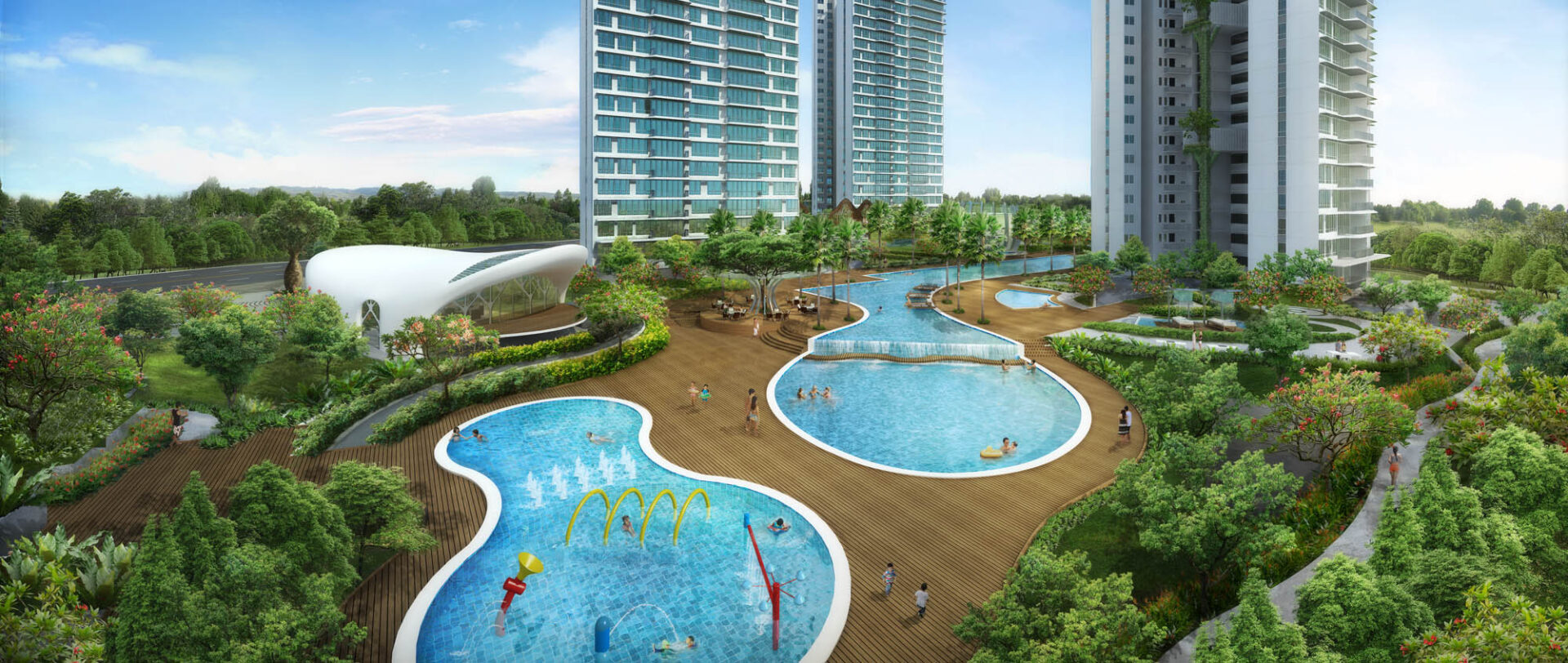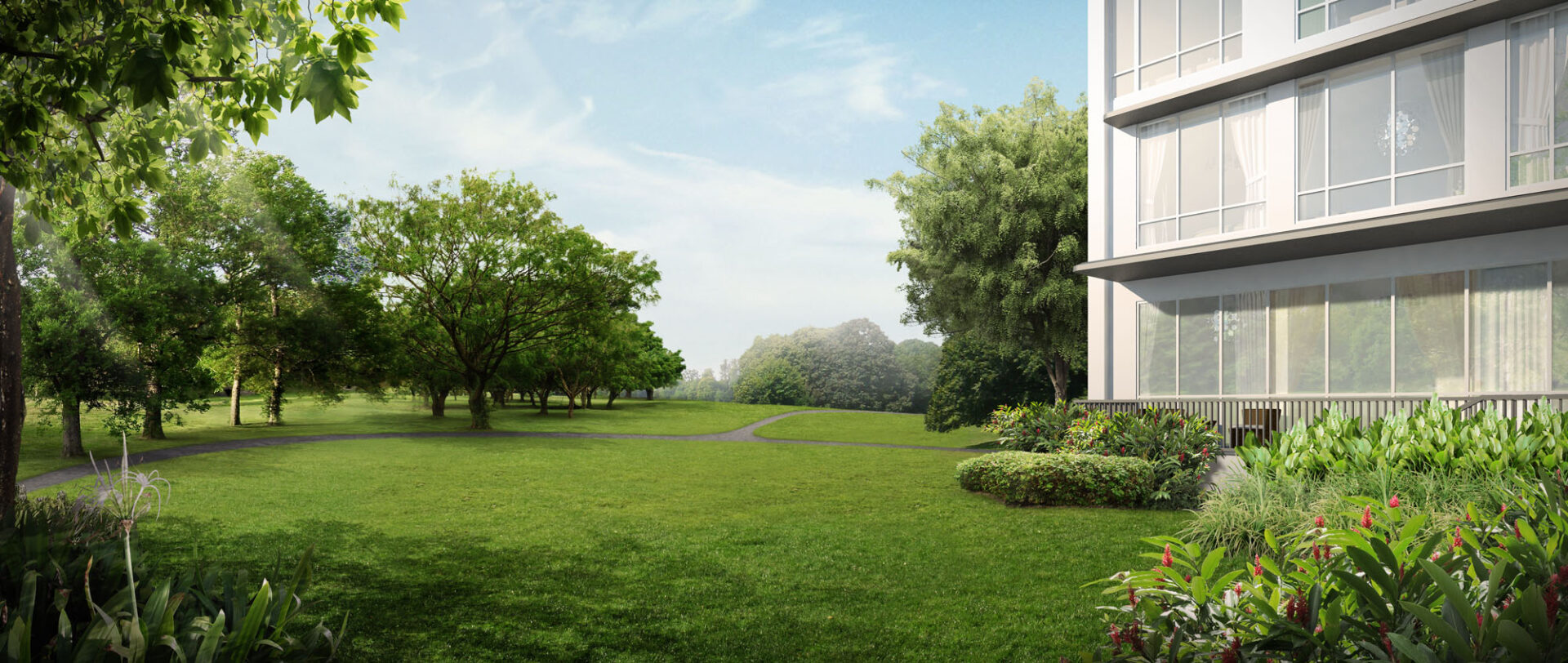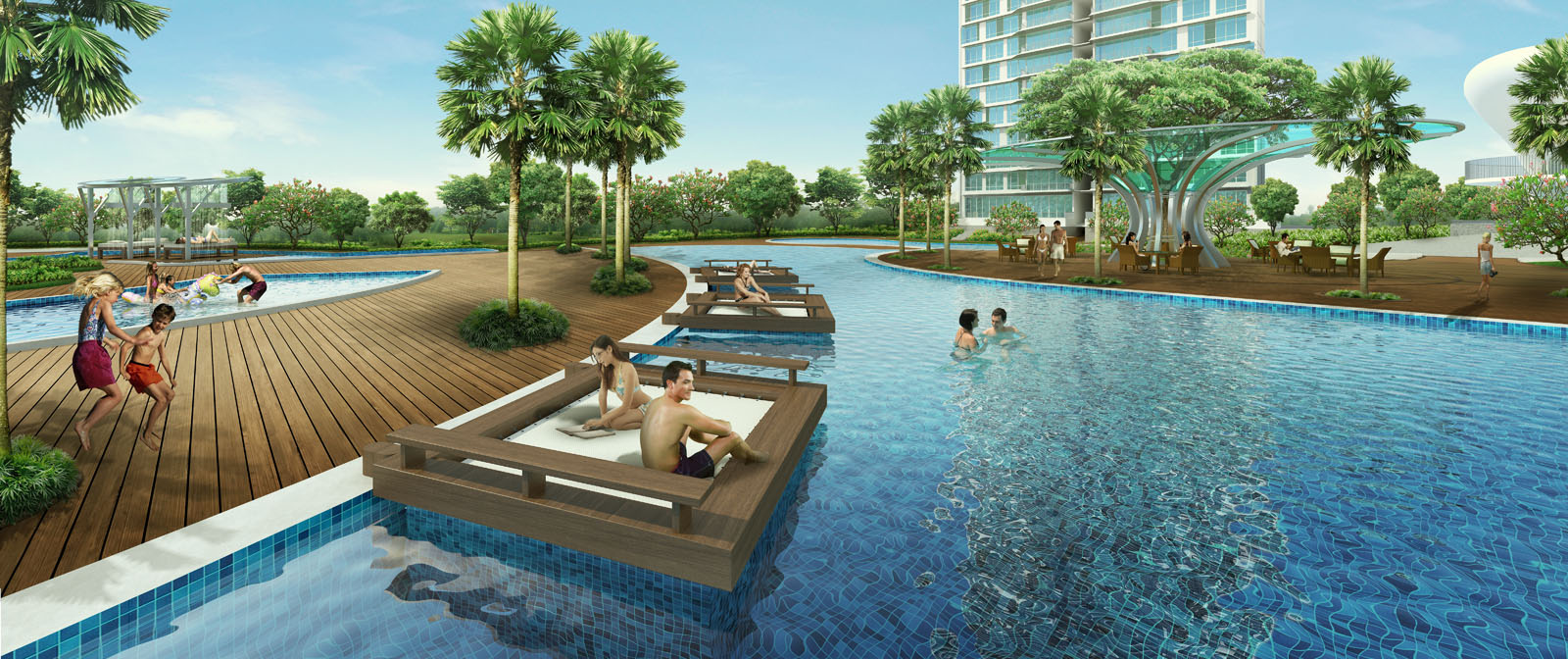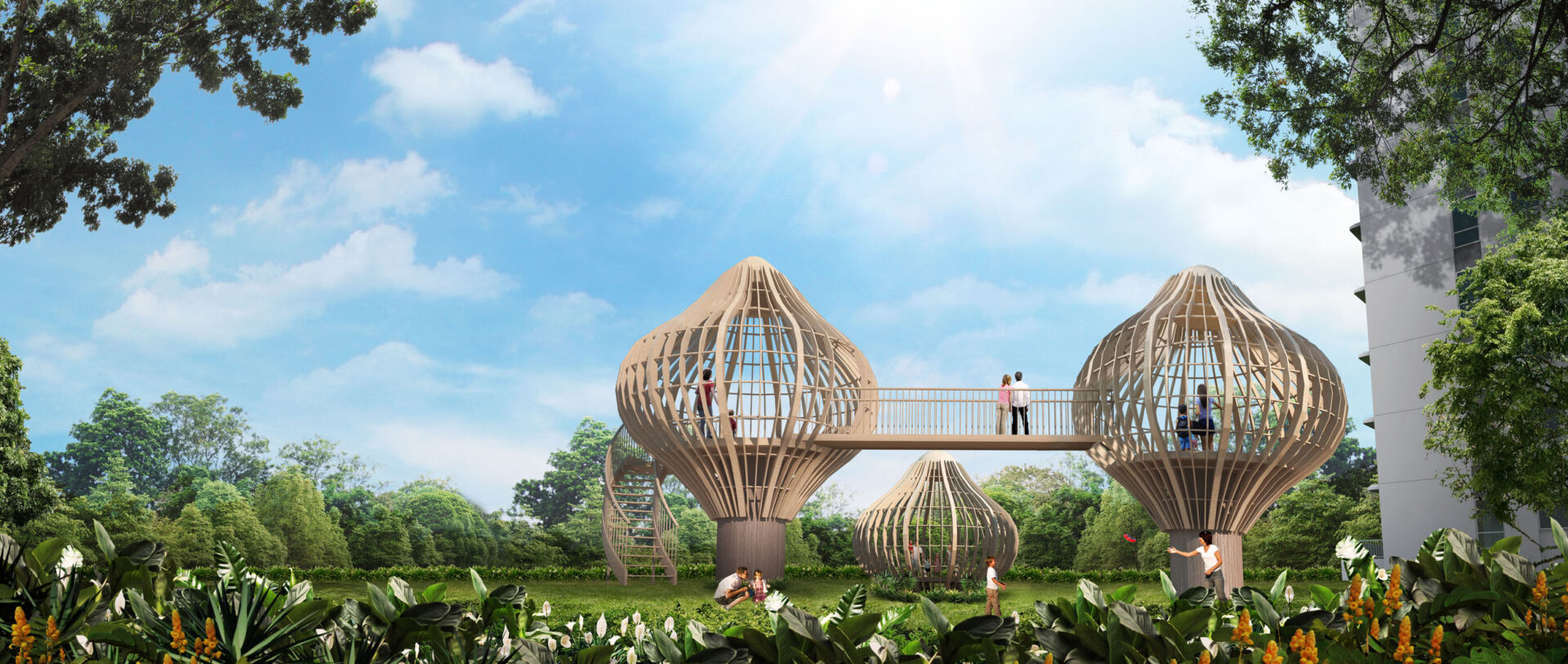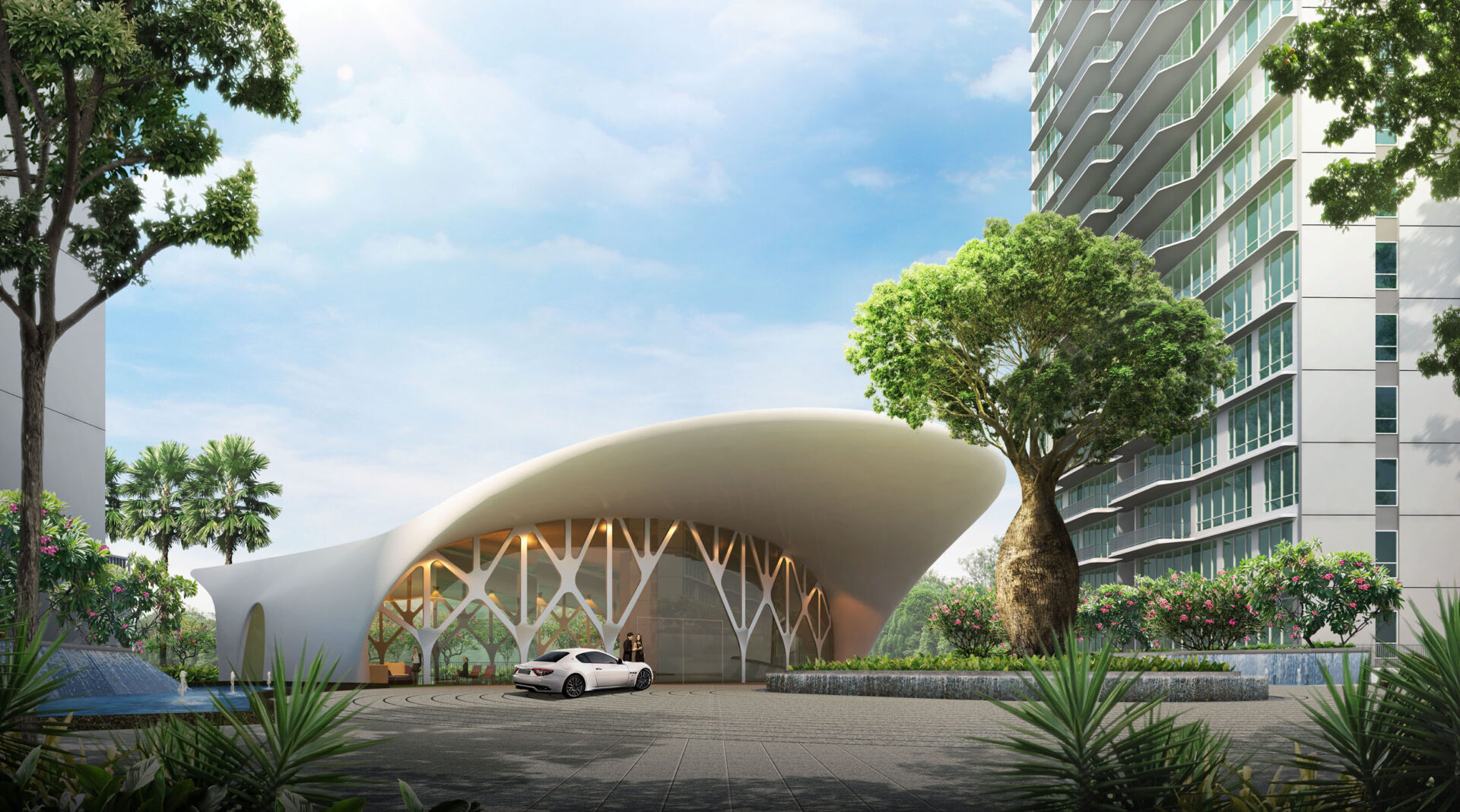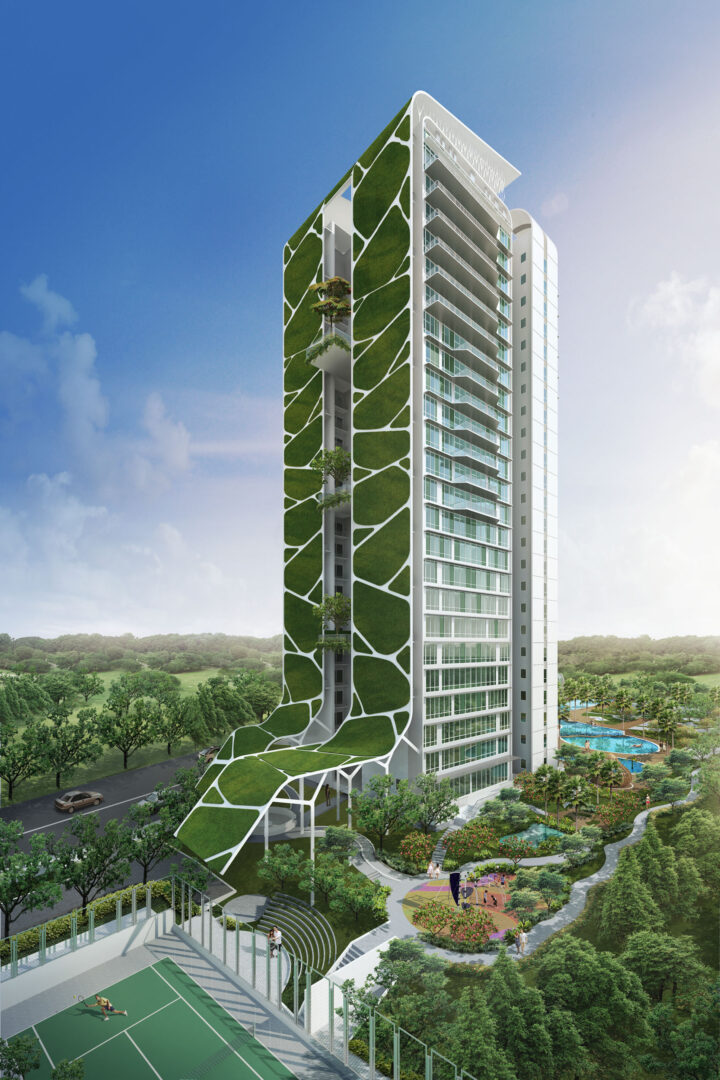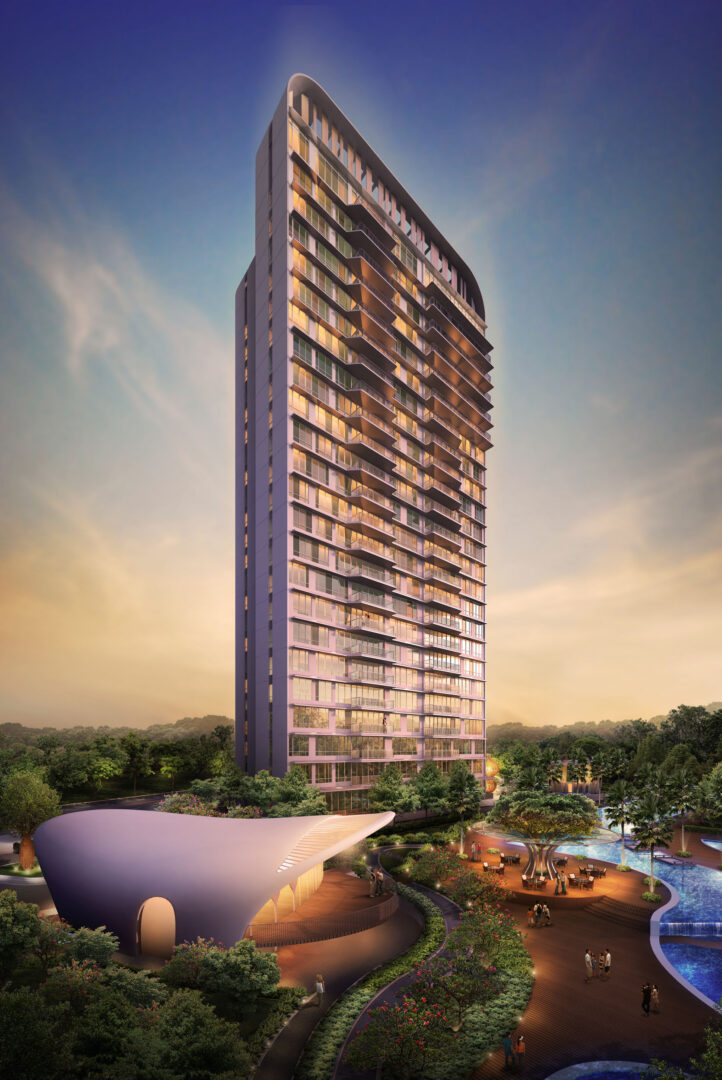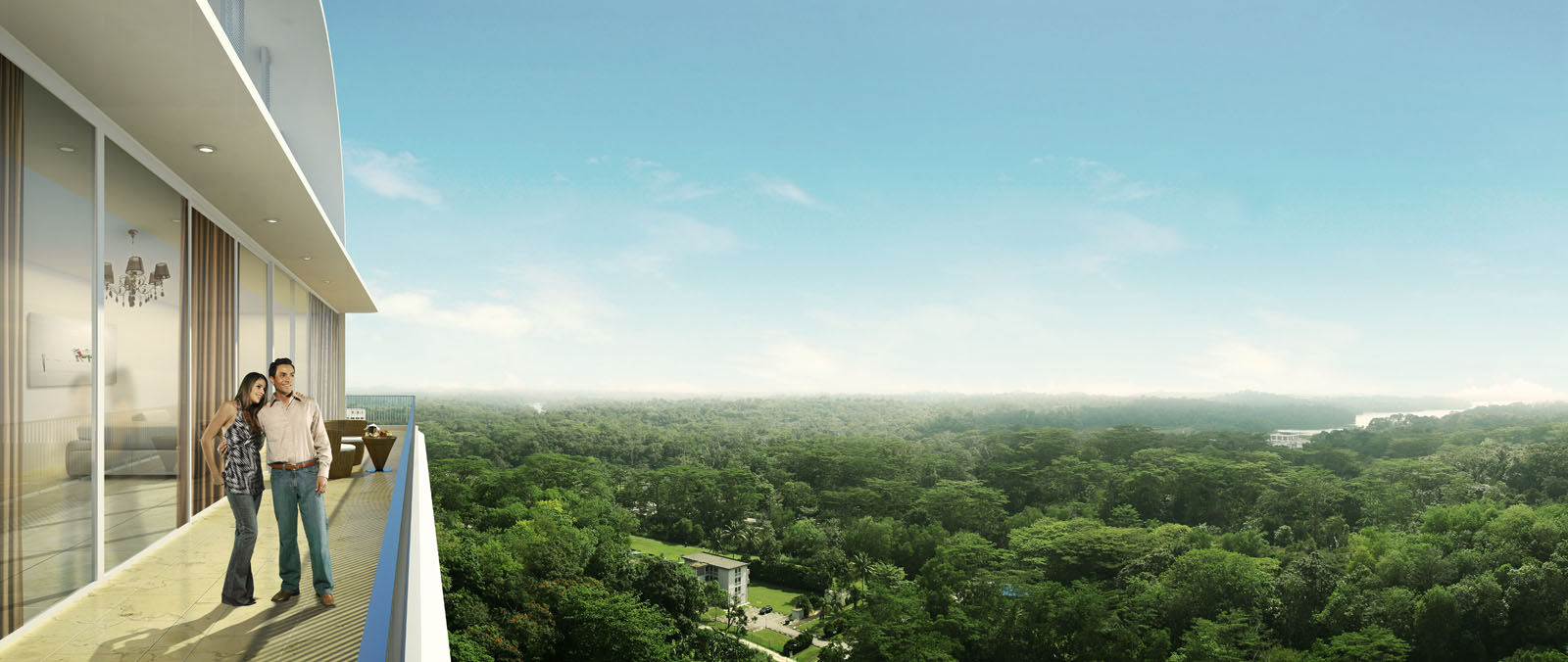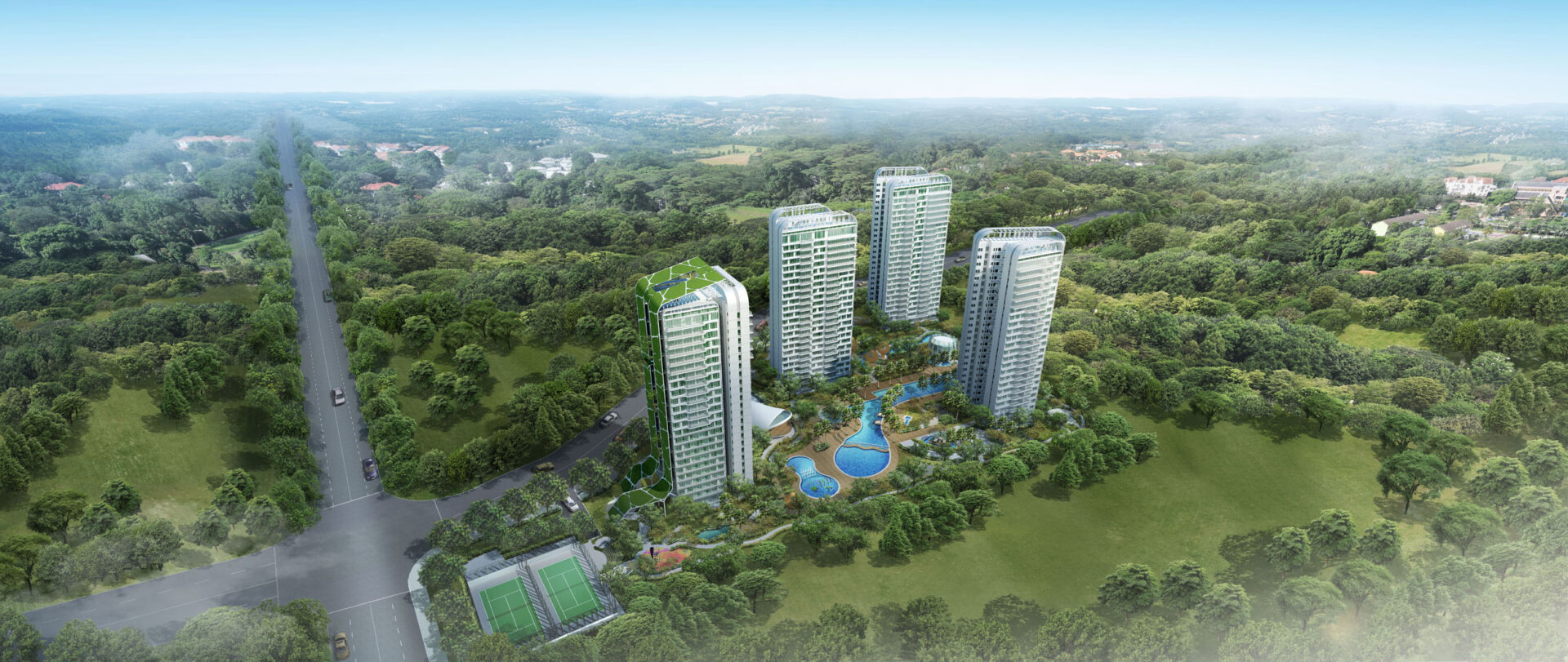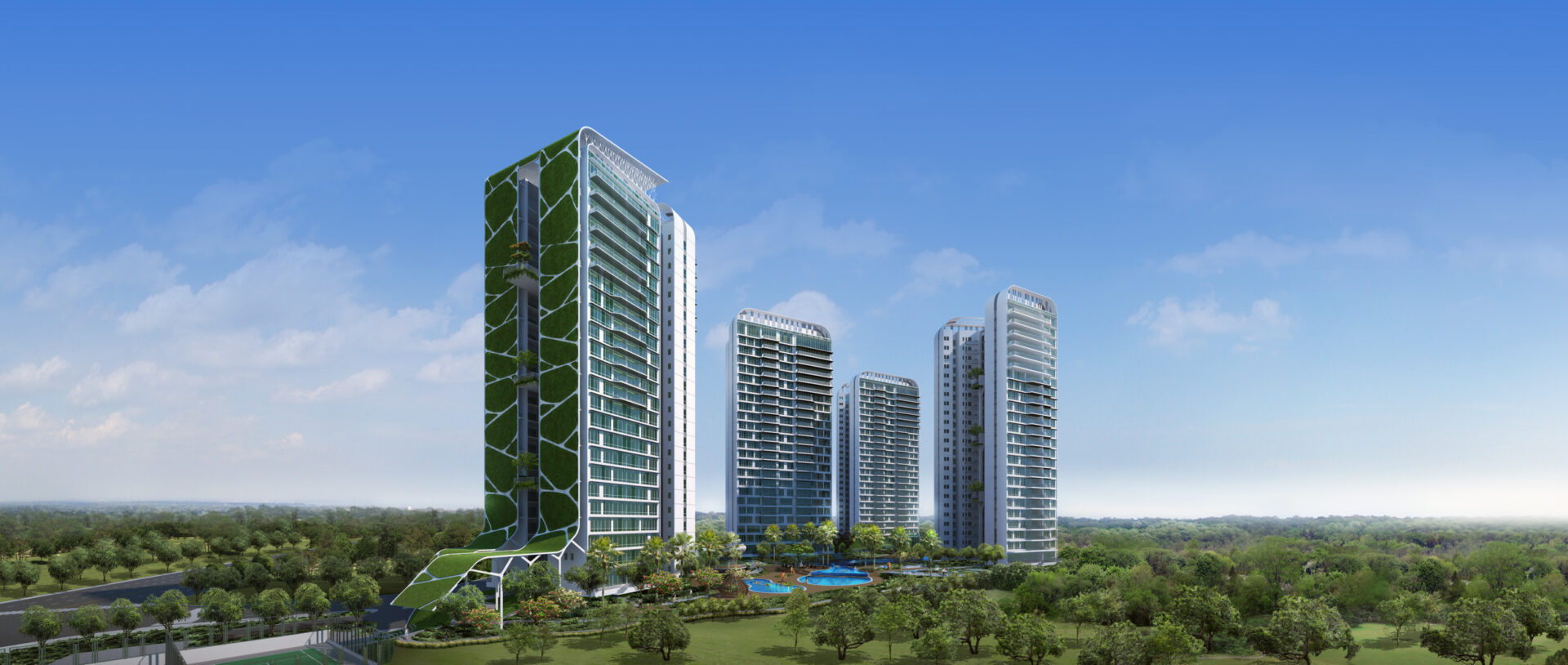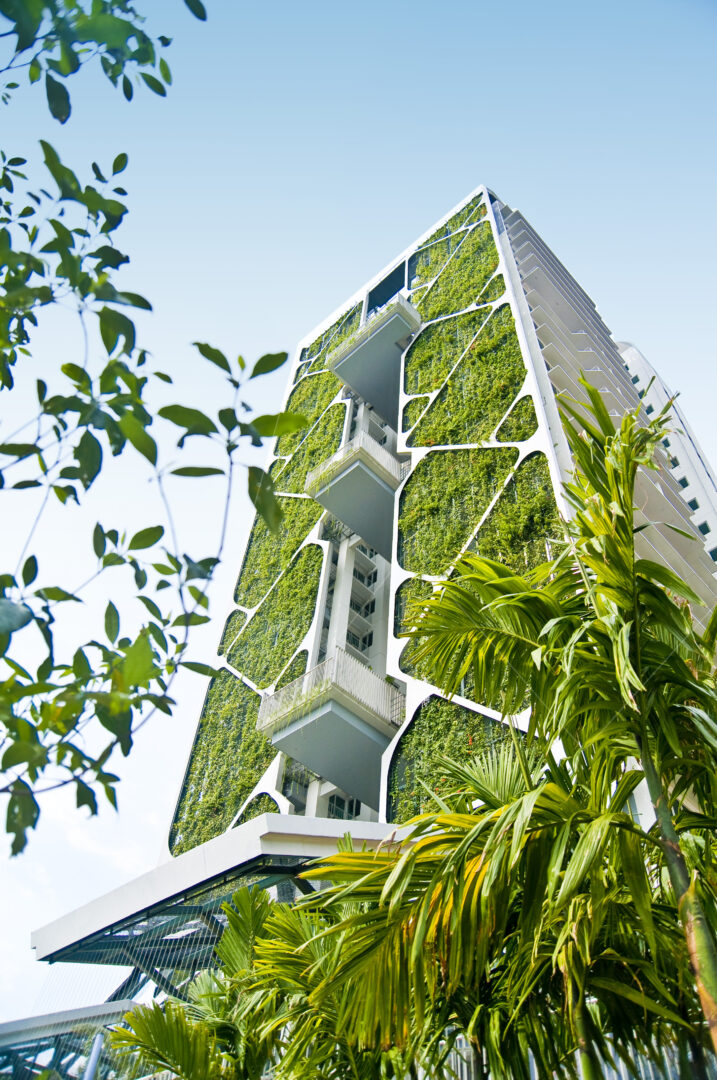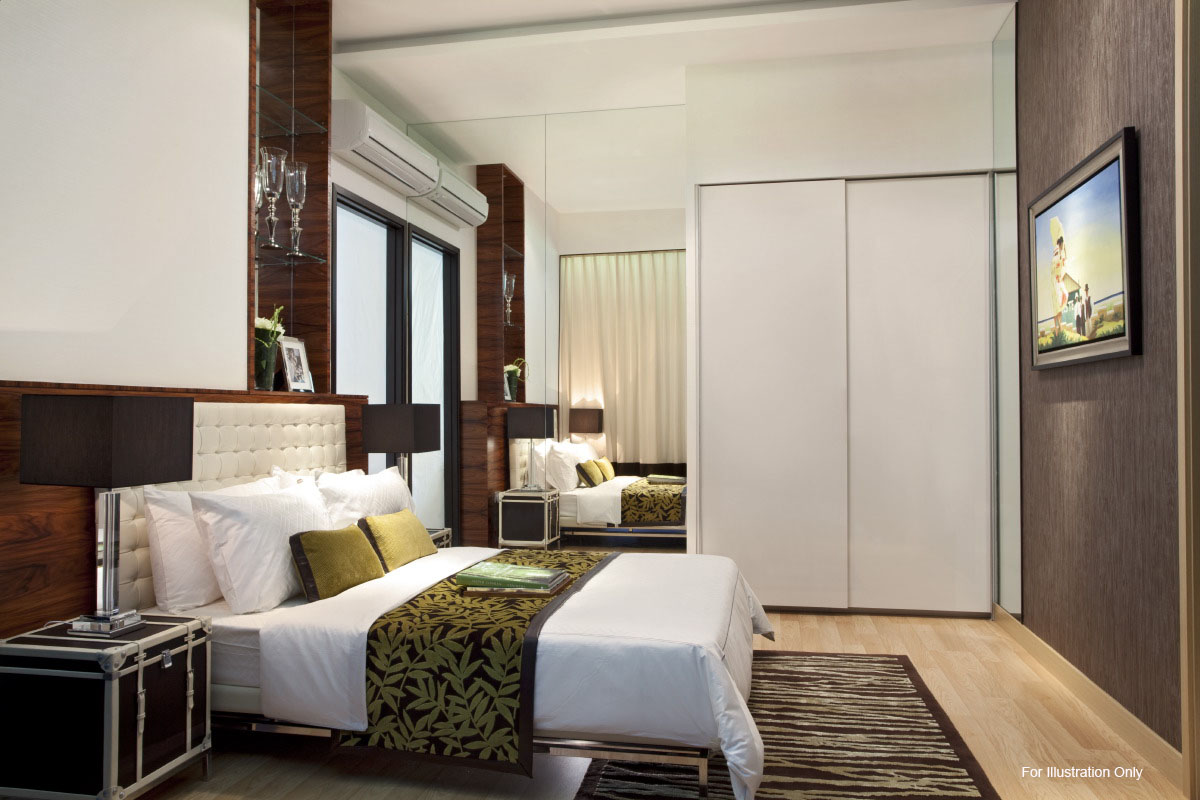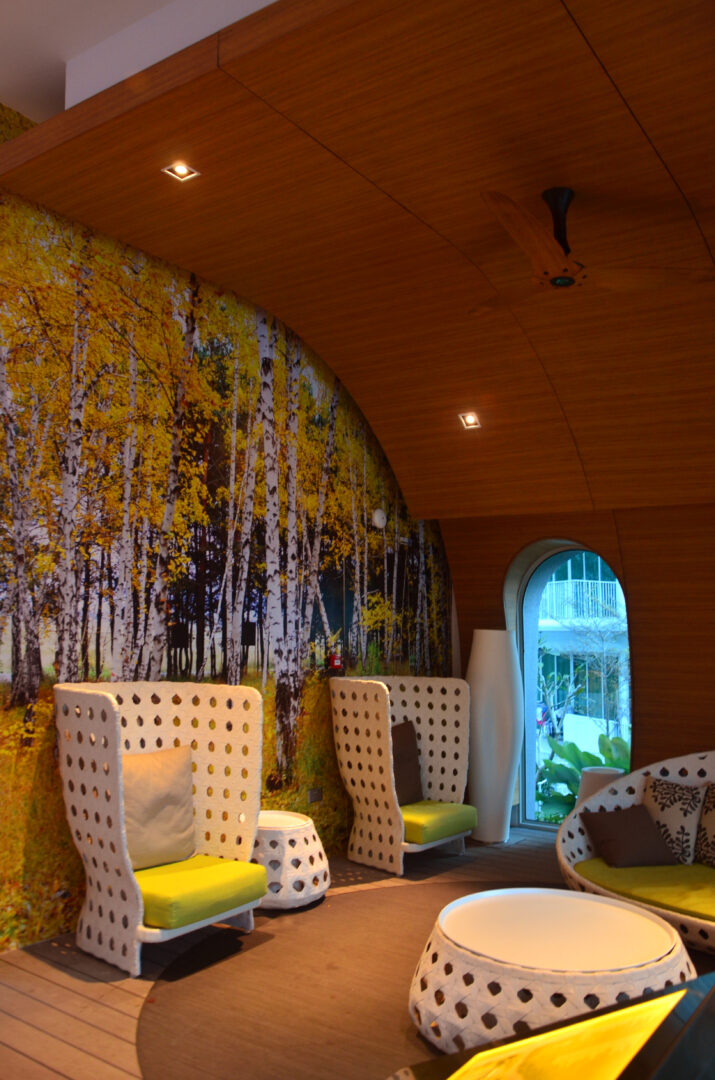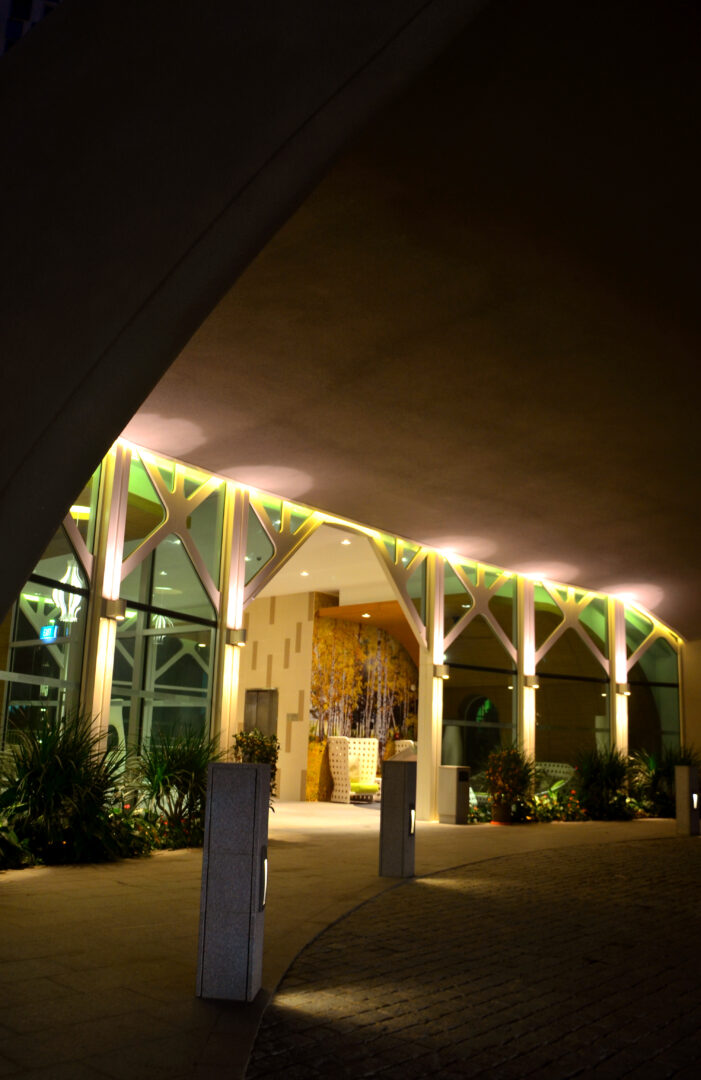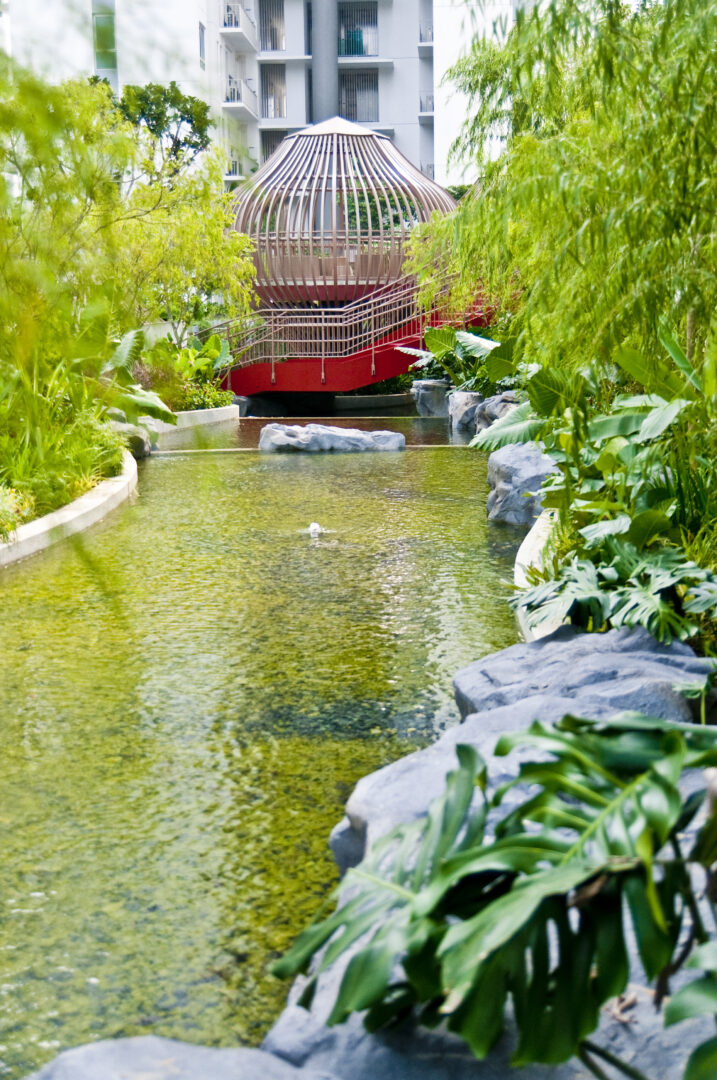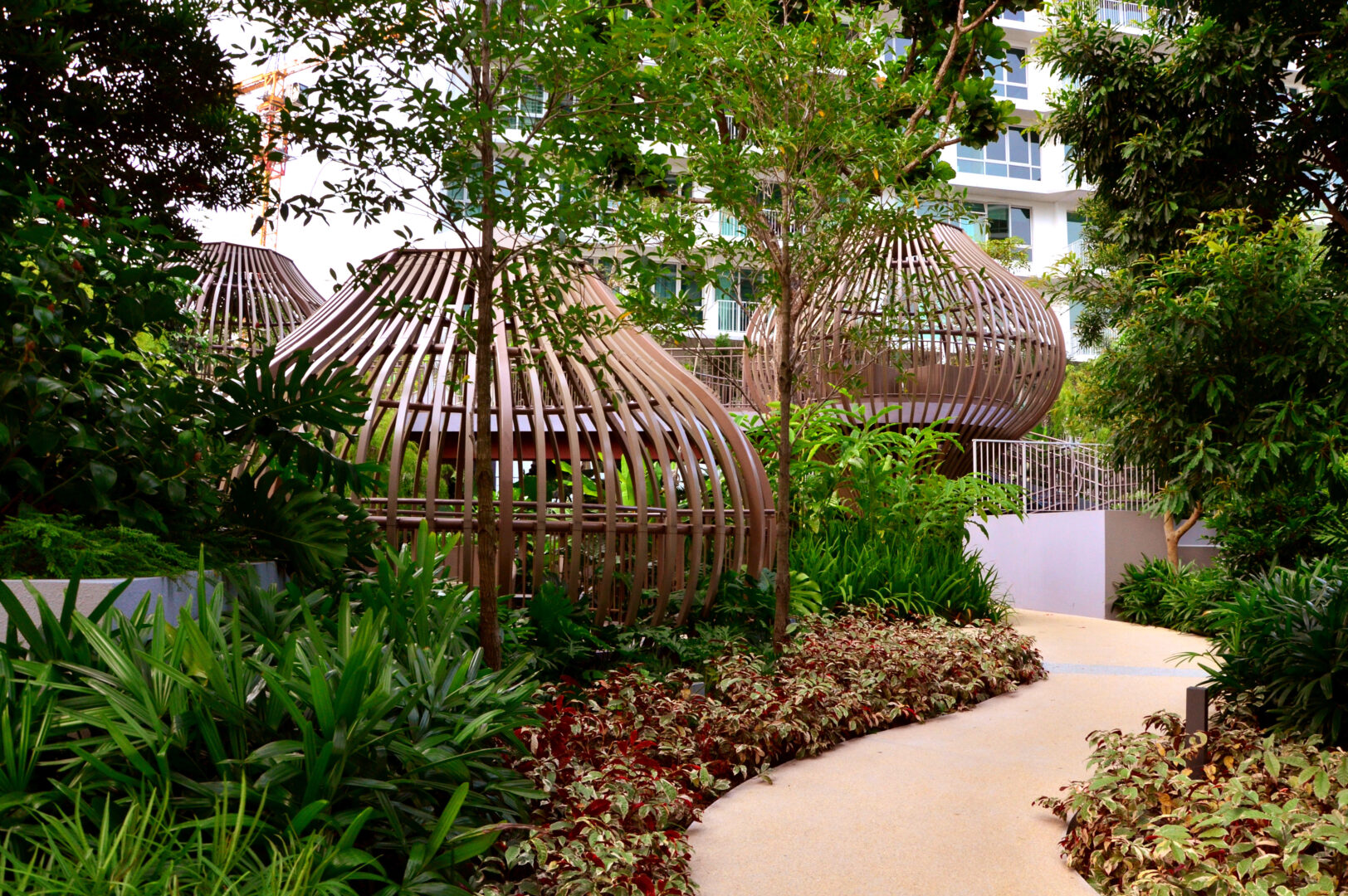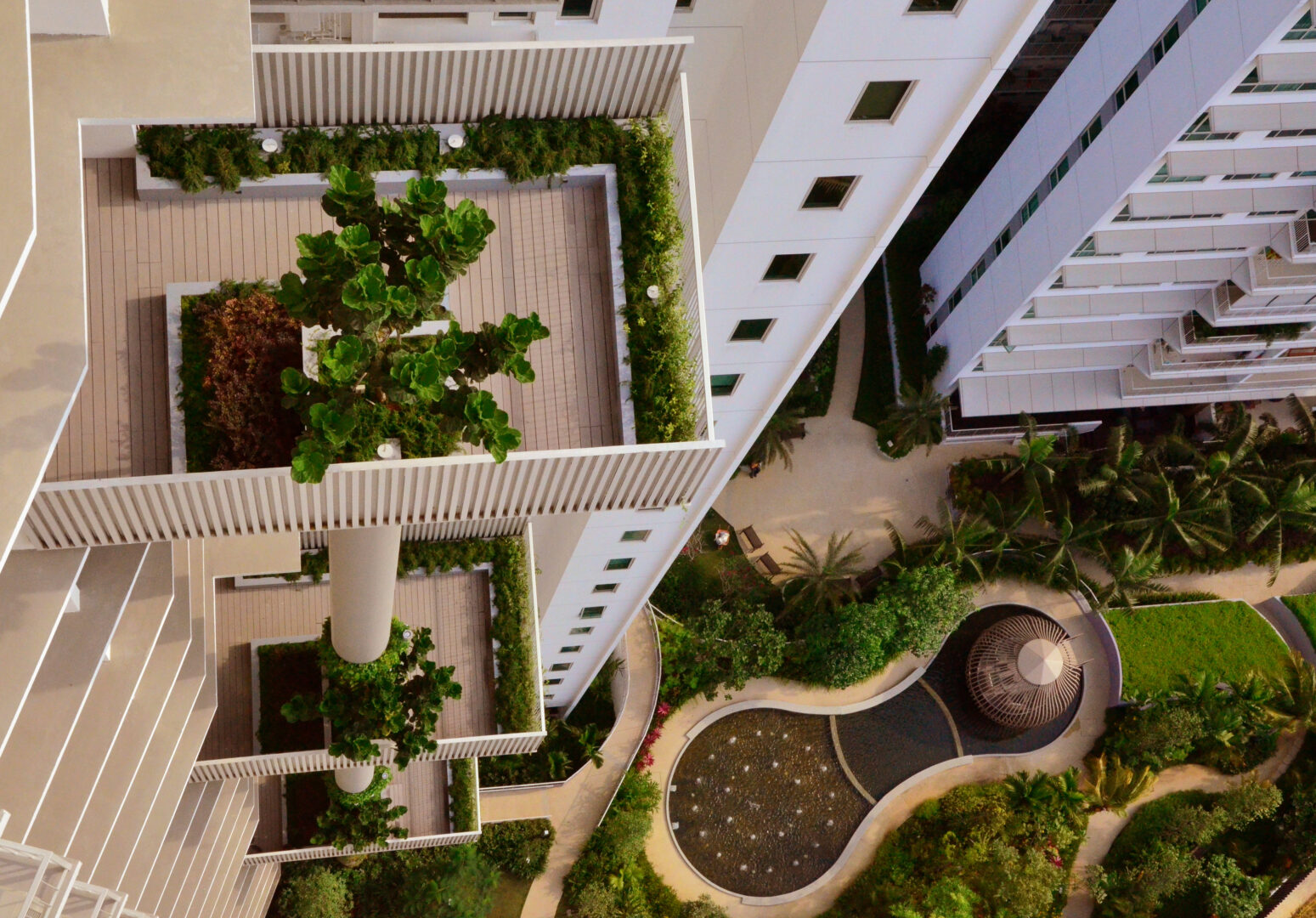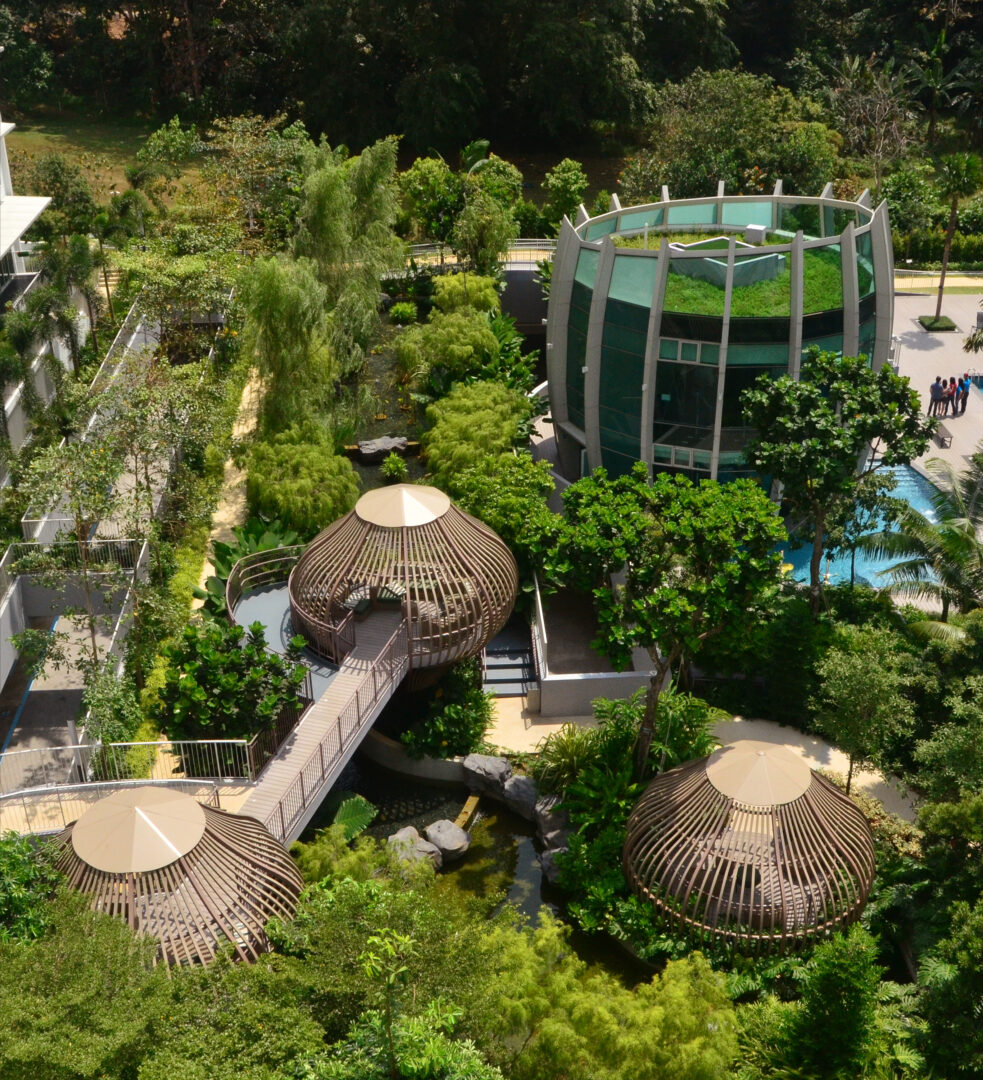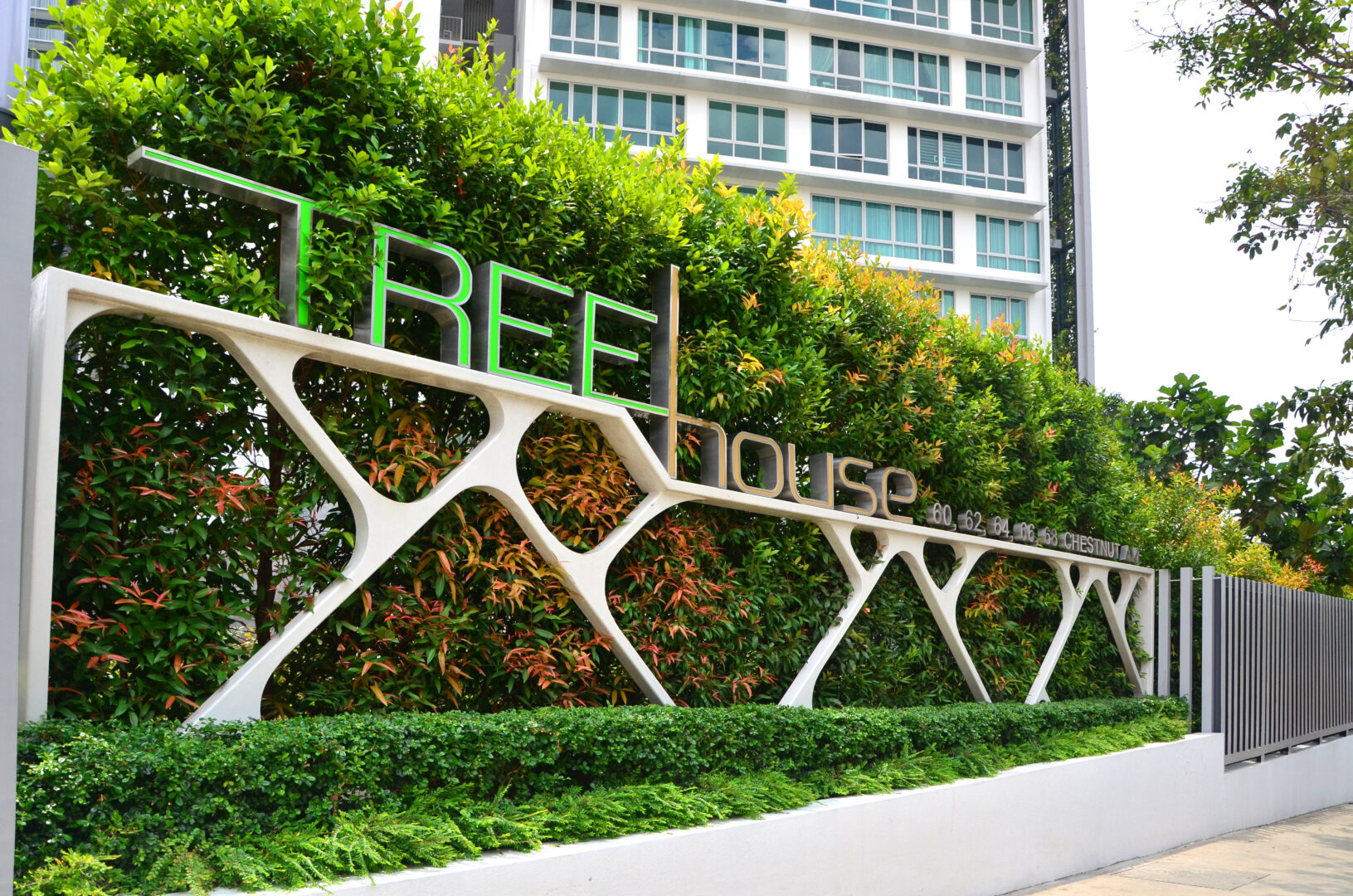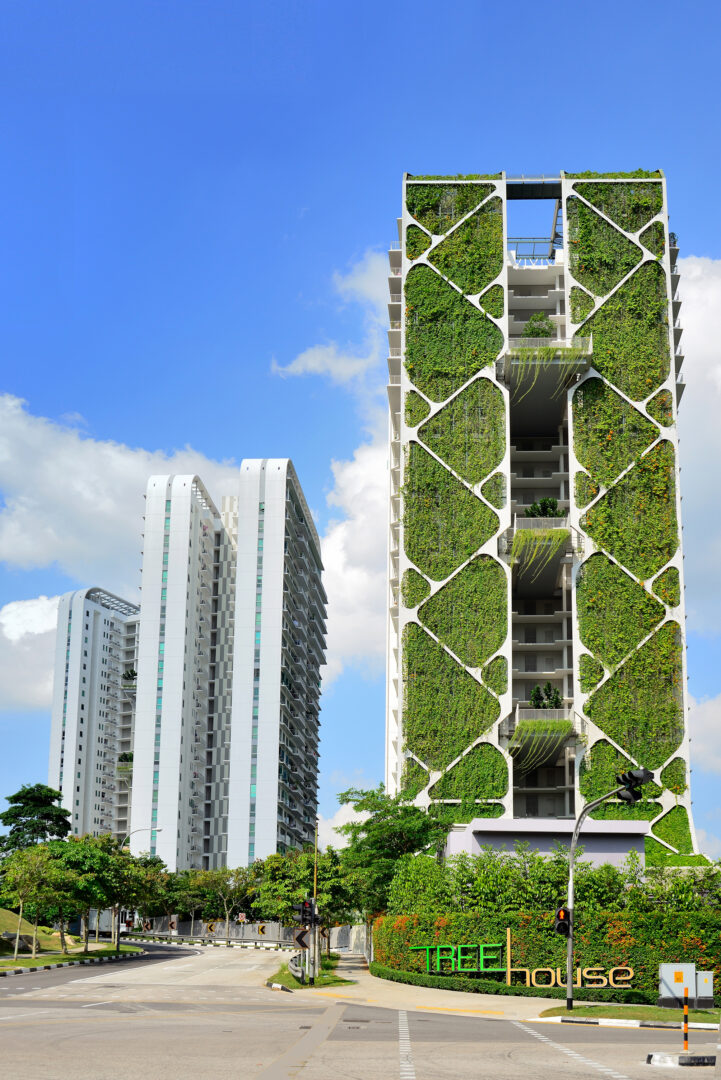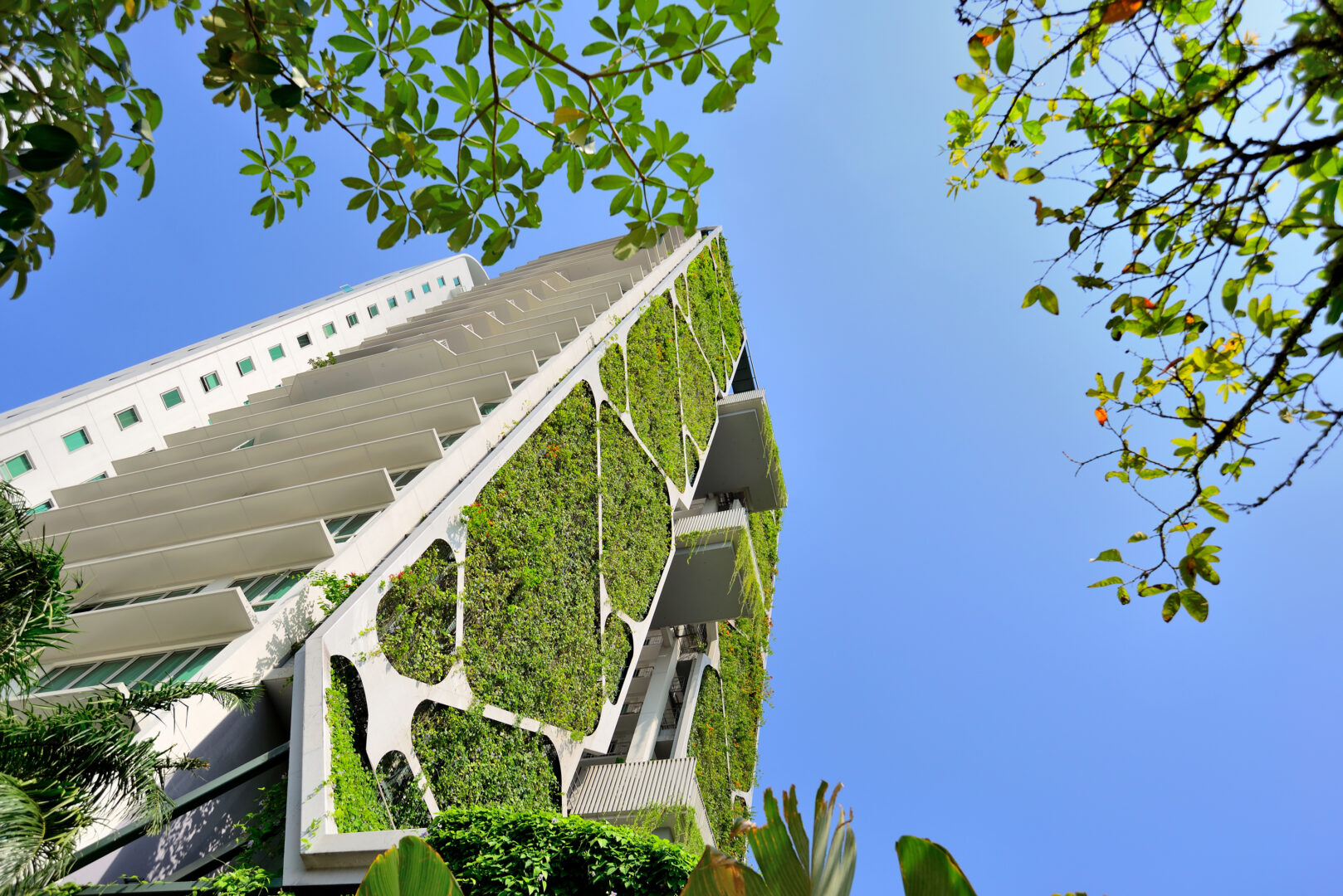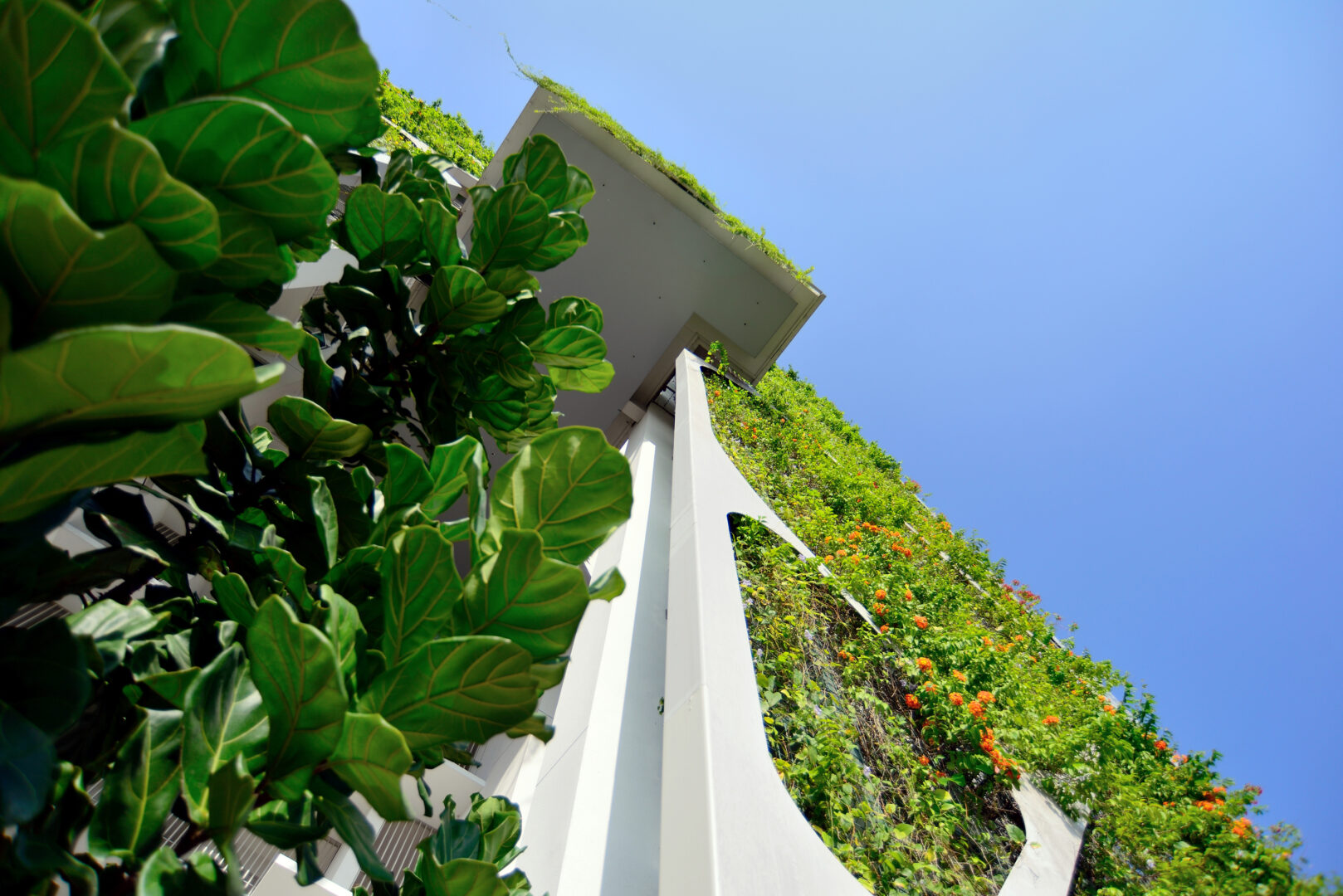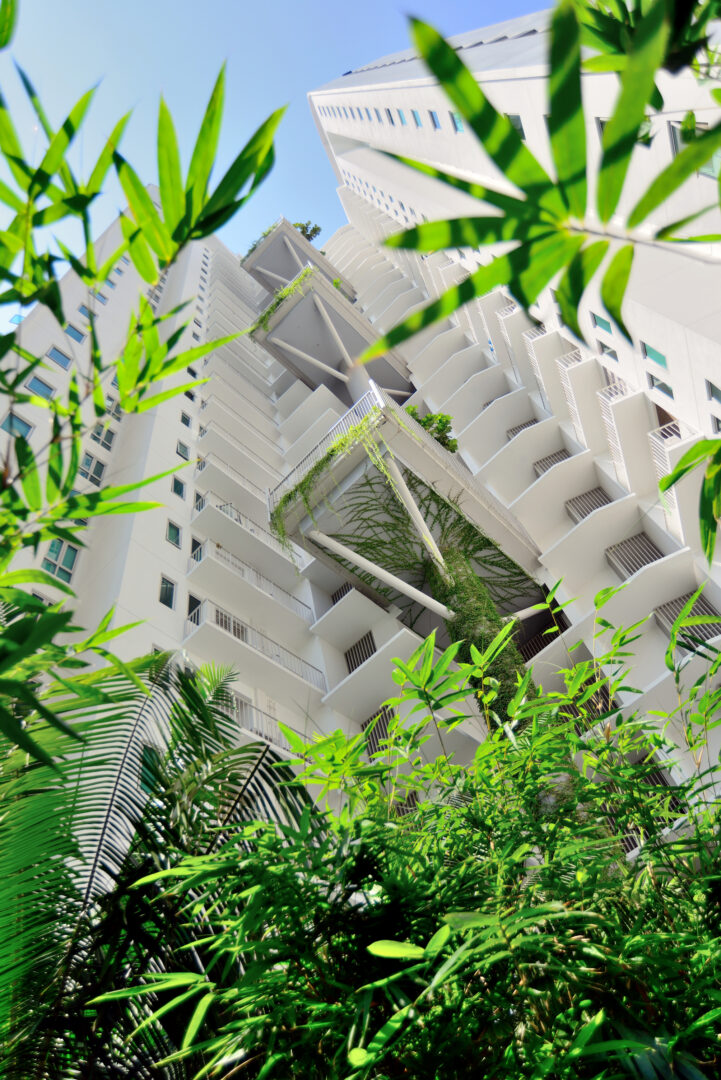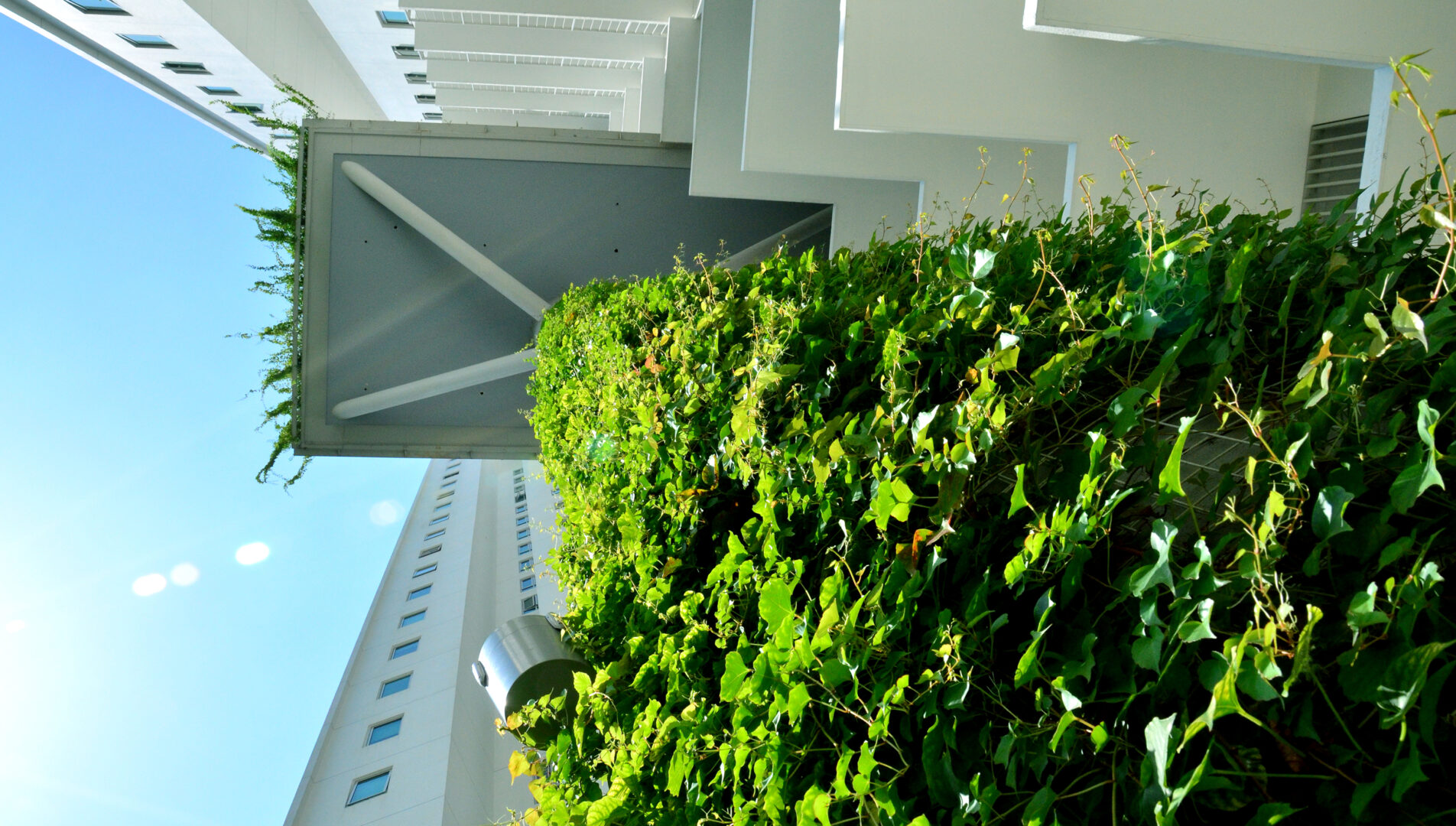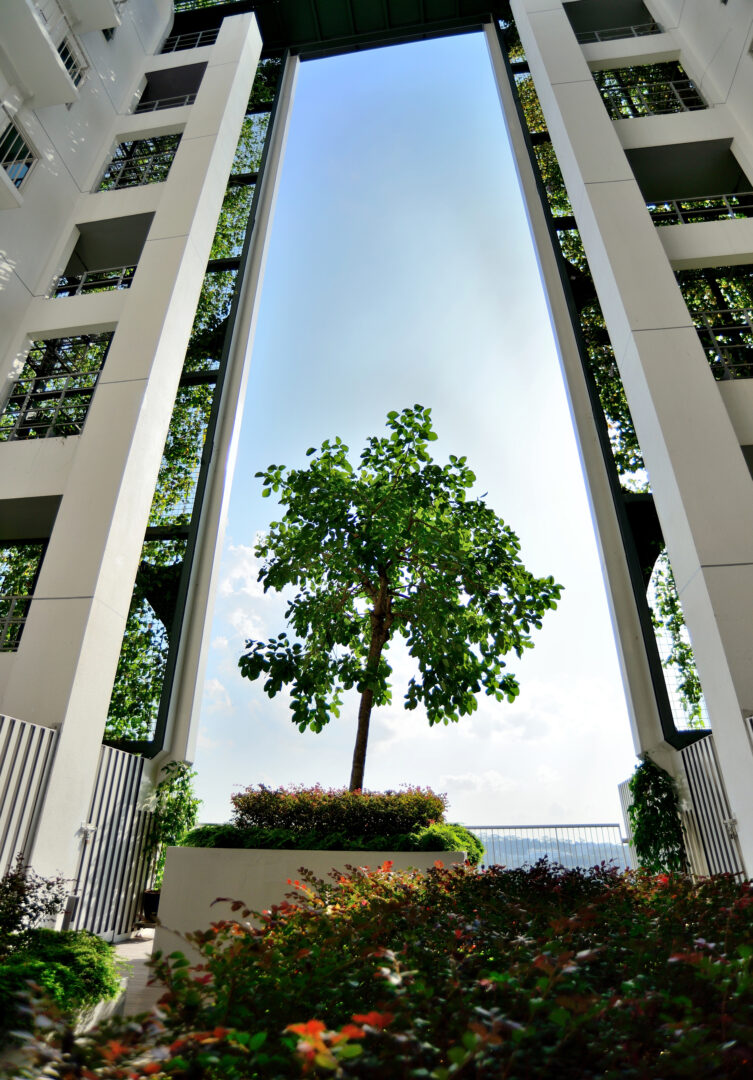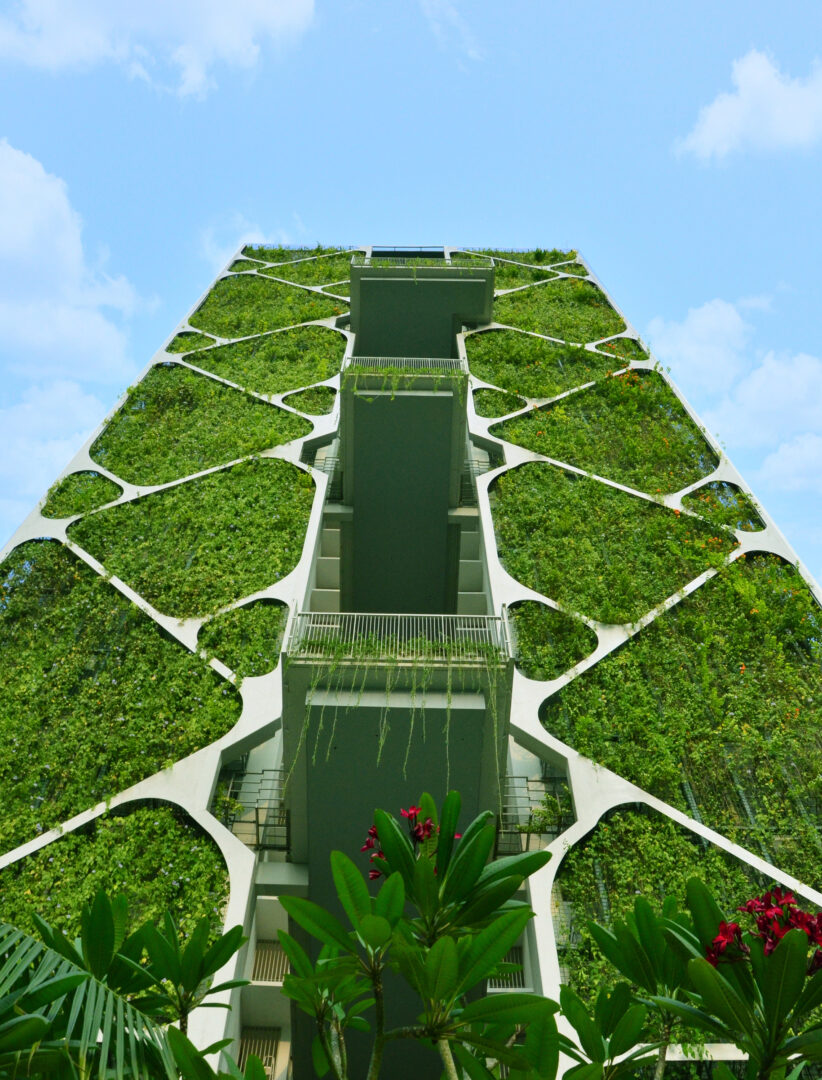Treehouse
Residential
Location: Chestnut Avenue / Petir Road
Country: Singapore
Year (TOP): 2013
Status: Completed
Developer: Chestnut Avenue Developments Pte Ltd
Number of Unit: 429
 Location: Chestnut Avenue / Petir Road
Location: Chestnut Avenue / Petir Road Country: Singapore
Country: Singapore Year (TOP): 2013
Year (TOP): 2013 Status: Completed
Status: Completed Developer: Chestnut Avenue Developments Pte Ltd
Developer: Chestnut Avenue Developments Pte Ltd Number of Unit: 429
Number of Unit: 429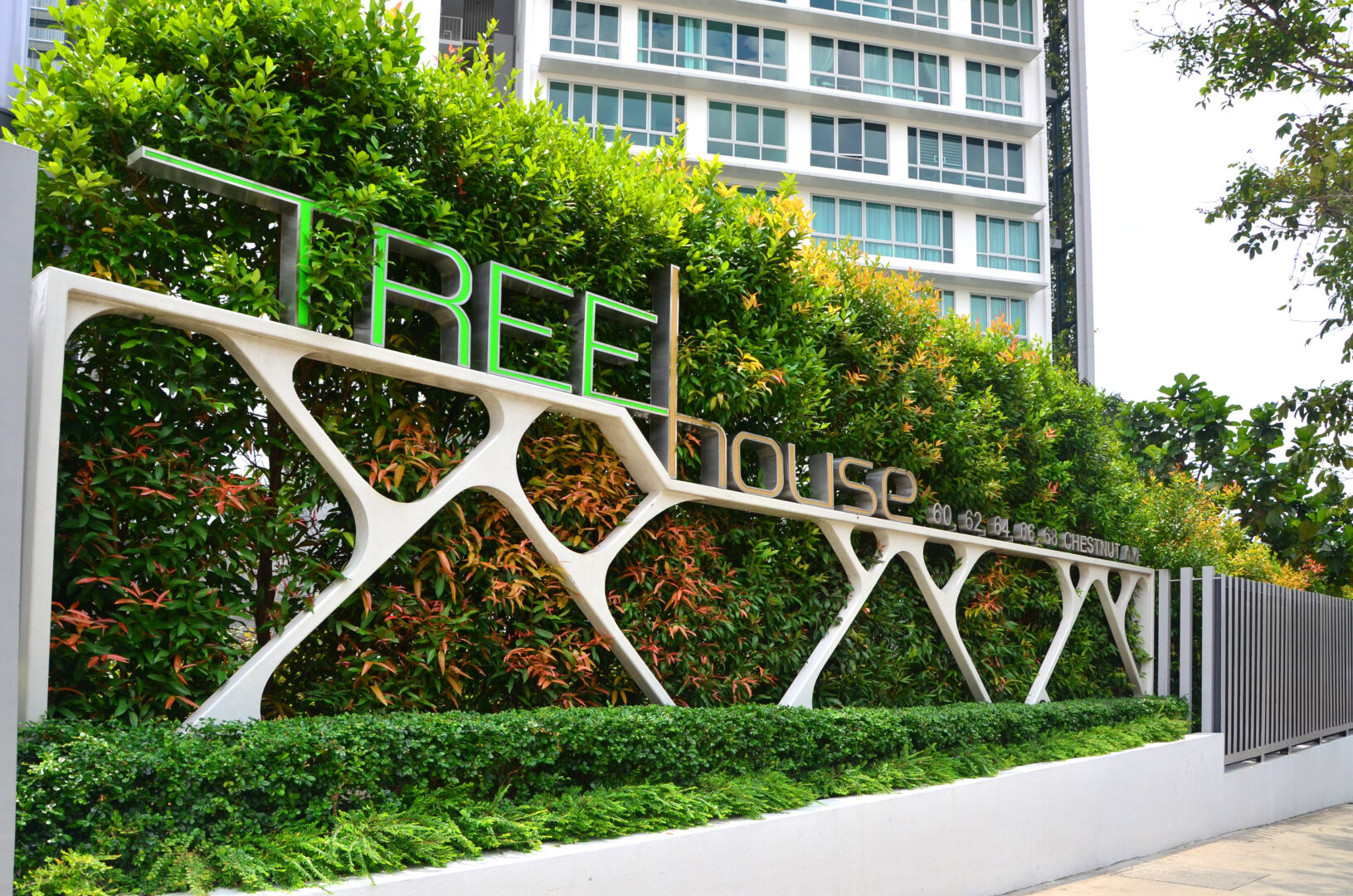
Description of project
For close to two decades now, City Developments Limited (CDL) have been firmly committed to green buildings and sustainable development, and this is done through applying technology and innovation throughout the building cycle – from conceptualisation, to construction, to maintenance – to reduce our carbon footprint.
CDL aims to maintain leadership as a green developer and to improve further in how to build sustainably. In general, CDL invests between 2% and 5% of a development’s construction cost in green innovation. CDL continually offer consumers the best eco-friendly solutions and designs, where applicable and practical, and deliver high quality developments for customers.
In Tree House, nature and the surrounding greenery served as key inspirations for the conceptualisation of the development. Located next to the Bukit Timah Nature Reserve, residents can enjoy breathtaking views of the reserve, as well as of the Upper Peirce Reservoir. The development was designed with sustainability as a key consideration, in line with CDL’s business ethos to “Conserve as we Construct”.
Tree House is an architectural creation inspired not only by its surroundings, which is largely a green oasis, but also by Biomimicry, innovation inspired by nature. The concept for the development of Tree House seeks to reinforce this condition; to sync with its natural environs and offer the same within the built environment. Site planning embraces the native ecosystem by studying existing biodiversity and climatic conditions. Biodiversity Impact Assessment (BIA) was carried out to ensure continuity of the original ecosystem, vertical greenery and generous landscaping is expressed throughout the development.
The architects observed nature’s models and took inspiration from these designs and processes to solve human problems. For instance, a solar cell inspired by a leaf, or a bio-shield inspired by plant structure for the cooling of living environment. The magnificent and majestic 24-storey high Green Wall in Tree House was designed as a “vertical” continuity of greenery from adjacent “horizontal” green surroundings and it also functions as a Bio-shield to maximize green lungs and reduce solar radiation and cooling load. The Bio-shield is approximately 24 stories high (78m) and 20m wide.
Complementing the nature-inspired architecture are 3 layers of green sky gardens on the 7th, 13th & 19th floors of each block with green creepers clinched on the circular support. These act as vantage points and additional vertical green lungs for residents. The extensive cantilever of sky gardens maximizes greenery and provides shade for the internal spaces in Tree House.
Tree House, an eco-inspired residential development, has set new sustainability benchmarks and defined a new era of living harmoniously with nature in a densely built-up urban environment like Singapore.
The site planning was also guided by extensive studies that included a Computational Fluid Dynamics (CFD) study. The CFD study was carried out by generating simulations of macro air flow in response to the site’s climatic conditions to create the most optimized building orientation for ventilation and thermal comfort.

Passive environmental design drove the block planning by setting the towers in a North-South orientation. Concurrently, to capitalize on passive environmental design, typical lobbies and basement car parks were designed as naturally ventilated to eliminate the use of mechanical ventilation, smoke purging and sprinkler systems. Such deliberation has achieved significant impact to the natural lighting brought into the basement and cut down the need for mechanical ventilation. This has enabled the resident to enjoy the benefits of good natural lighting and ventilation all days.
The design and construction of the development with careful consideration of passive design, together with the use of sustainable materials, enhances energy and water efficiency to achieve a better indoor environmental quality. The planning strategy was to maximize the use of Gross Floor Area (GFA) while minimizing the building footprint in order to optimize the greenery provision (green plot ratio or GPR) for the site. The resulting GPR achieved is approximately 7.46, improving environmental thermal comfort levels through reduction of heat island effect.
Given that the land parcel is on an undulating terrain, the landscape deck and basement design were tiered to respect the site’s existing sloping levels. The strategy helped to minimize earth-cutting during excavation, thus reducing environmental impact on the site.
Native plants and fruit trees are planted within development and provision of Eco Pond and Bio-Swale in respect to the biodiversity study. Some 99 native animal and 32 plant species were identified and the tree and plant species for landscaping were carefully selected to attract native wildlife, and were among a long list of other recommendations to protect biodiversity.
The bio-swales detain and treat rain water run-off from about 10% of the paved areas. Implementation of the swales is a sustainable green practice that not only provide an additional green aesthetic element, but also perform a vital role in reducing pollution to waterways. They filter pollutants, reducing the infiltration of pollution in groundwater. The swales are environmentally viable alternatives to conventional storm drains that are used to convey storm water runoff.
The building manifests through conscious, refined decisions to employ building technology that is both efficient and sensitive to the environment.
The development’s construction was largely driven by pre-fabricated construction methods. Aside from extensive use of precast concrete for columns, walls, beams and slabs, PBUs (prefab bathroom units) were installed in 75% of all toilets. The PBUs are manufactured and assembled off-site in factories and later delivered to the construction site for installation. This method increases social and environmental benefits as a safe and healthier working environment is created through lessen site work. Also, service pipes are concealed in prefabricated bathrooms for greater reliability, performance and aesthetics. Produced locally, these high quality modules contribute to savings in manpower and time on site and reduce heat transmission on site during the construction stage.
A Cobiax flooring system was also used in the development. A void-forming technology which forms light weight, biaxial floor slabs, it reduces the volume of concrete by displacing non-working deadload and reduces the cost of the foundations.
1) Guinness World Record, World’s Largest Vertical Garden, 2014.
2) Best Innovative Green Building (Gold), MIPIM Asia Awards 2013.
3) BCA Green Mark Platinum Award.
4) BCA Universal Design Gold Award 2013.
5) SIA Architectural Design Awards, Honourable Mention – Greenscape (High-Rise Greenery), 2014
6) Singapore Landscape Architecture Awards (SILA) 2013 Merit Award: Residential Design Category
(Local Residences)
7) Landscape Excellence Assessment Framework (LEAF) Award, Certificate of Recognition – Outstanding Project, 2014.
8) Singapore’s Public Utilities Board’s Active, Beautiful and Clean (ABC) Waters Certification.
9) BCA Construction Excellence Awards, Merit, 2015.
10) BCA Construction Productivity Award, Platinum Award Winner, 2015.
11) BCA Design & Engineering Safety Excellence Award, Merit Award Winner, 2015.
12) BCA Universal Design Mark, Gold Award Winner, 2014.
13) SIA Architectural Design Awards, Honourable Mention – Greenscape (High-Rise Greenery), 2014
14) FIABCI World D’ Excellence Awards, Sustainable Development Category – Gold, 2015.
15) Singapore Property Awards, Sustainable Category, 2014.
16) Landscape Industry Association (Singapore) LIAS Award, Gold, 2015.

